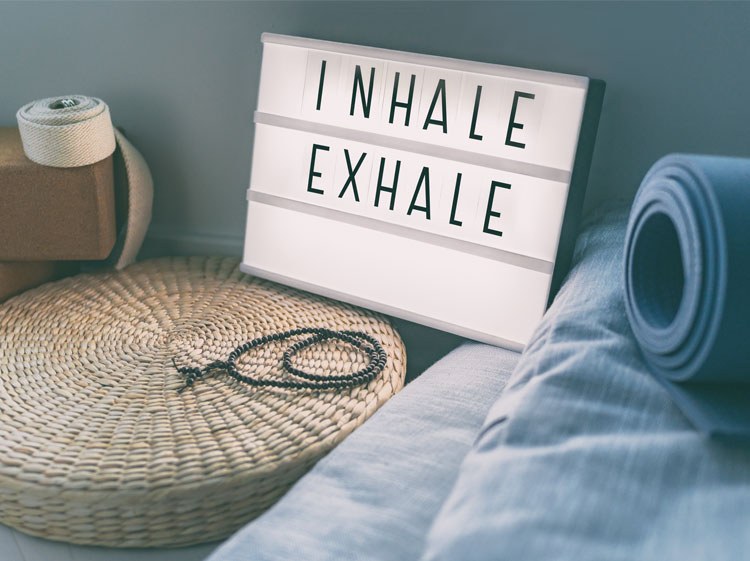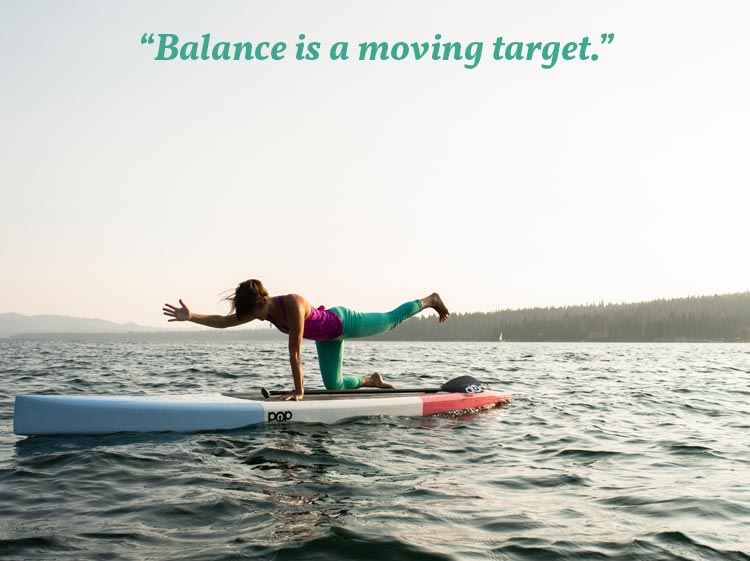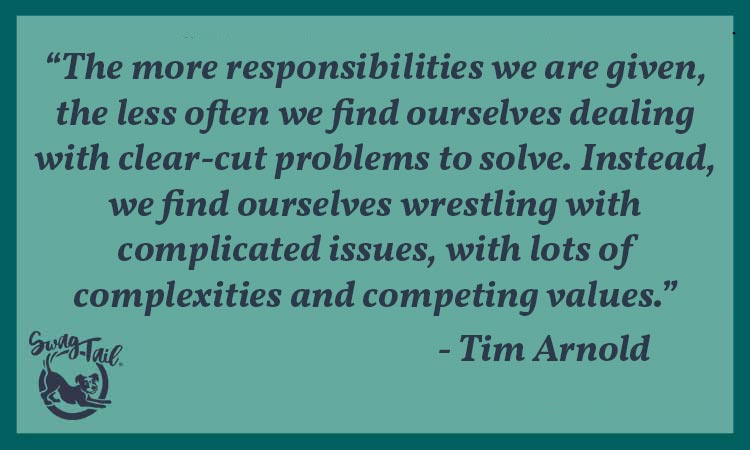 Everyday life is full of mental and emotional pressure. If this tension causes anxiety, then you might experience strain in your relationships or reduced joy in your work and home life. Instead, you can shift your perspective about this pressure and embrace tension as a normal part of life. Doing this will give you more confidence to maneuver any challenges that come your way. And, you can remain calm in the face of uncertainty.
Everyday life is full of mental and emotional pressure. If this tension causes anxiety, then you might experience strain in your relationships or reduced joy in your work and home life. Instead, you can shift your perspective about this pressure and embrace tension as a normal part of life. Doing this will give you more confidence to maneuver any challenges that come your way. And, you can remain calm in the face of uncertainty.
Embracing tension in a healthy way is actually something I’ve focused on a lot lately. In a broad sense, we’re in the middle of electing our next President of the United States of America and there is no clear winner in sight. The unknown is creating lots of tension in our communities.
There are lots of smaller moments of tension throughout each day, too. I work from home and can often be interrupted by my husband or dog or neighboring construction project. Even the demands of keeping the household clean and running smoothly takes up space in the back of my mind.
Yet I constantly switch my attention back to my responsibilities here at Swagtail. I stay focused on writing content for clients, researching material for upcoming blog posts, and editing photos all to meet the deadlines in place. This can also be a source of tension even though I absolutely love my career.
If you work from home, you know what I’m talking about. And if you’ve recently had to make that adjustment due to COVID-19 restrictions, you do, too. Hint: You can check out my 7 tips to stay centered when you work from home here.
This tension between my work and home life is a lot like an ongoing game of tug of war. Unless I rent office space outside of my home, or significantly change my career path, this tension will continue to exist in my life. It’s not a problem that can be solved with one decision. As I accept this, my stress levels decrease. With the small choices I make each day, I also learn to manage this tension more effectively so I can still reach my goals. This post shares the secrets to my success thus far!
Photo Credit: RawPixel
TWO TYPES OF CHALLENGES
There are two basic types of challenges you face each and every day. The first of these are problems to solve. This occurs when you have to choose only one option to effectively deal with a situation. There might be one, two, or even more right answers available to you, but your final decision must rest on only one of those options. Often, you approach these problems with a right or wrong or good or bad viewpoint.
Problem-solving is essential in life and in your yoga business. You use it to create policies and procedures. You rely on it to resolve conflicts and create formulas to move forward with less stress. It’s a skill you learn at a young age and have refined over time to survive and thrive in your environment.
Yet, the second type of challenge is addressed far less frequently. This second category refers to tensions you need to manage, and they occur any time there is no immediate fix to a situation. Essentially, tension refers to problems that are unsolvable at the moment.
Embrace Tension in a Healthy Way
If you can’t resolve or remove tension, then it’s best to approach it with a different mindset.
To do this, view experiences from a broader perspective. Recognize the sources of tension without judgment and remain open to numerous outcomes. One of the best ways to learn to do this is through breathing.
TENSION IS LIKE BREATHING
The average person breathes 25,000 times a day. Many times each inhale and each exhale happens automatically in the body, just like digestion. Yet in yoga, we use pranayama to purposefully direct the flow of energy in the body. We consciously change the breathing pattern to increase focus or reduce stress.
There is a natural tension between the inhale and the exhale. If you viewed this tension as a problem to solve, choosing one over the other, then you’d end up in trouble. You’ll get blue in the face and eventually pass out. You need both to the inhale and exhale to survive. And, your body needs all parts of the breath to stay happy and healthy.
You’ve likely made peace with the breathing function of your body. Let’s see if you can start to approach the other areas of tension in your life with the same equanimity.

Photo Credit: Maridov
POLARITIES: THE FOUNDATION OF TENSION
Tim Arnold, the author of The Power of Healthy Tension, defines polarities as “situations in which two ideas or opinions are completely opposite from each other, yet equally valid or true.” Polarities have been around since the beginning of time, and they’ve been written about in great detail. Lao Tzu explored this through the yin and the yang. Jesus taught about this with grace and law.
In yoga, we use the practice of Pratipaksa-bhavana. This means to cultivate the opposite perspective, see another side to every story, and seek the truth.
Some common polarities you might encounter on a daily basis include:
- Structure vs flexibility
- Socializing vs solitude
- Spending vs saving
- Work vs home
- Care for others vs care for self
In a yoga practice, polarities take shape as:
- Practicing too much vs practicing too little
- Effort vs surrender
- Activity vs rest
- Inhaling vs exhaling
- Movement vs stillness
- Silence vs sound
In your yoga business, you also face seemingly impossible tension. This might look like:
- Stability vs change
- Planning vs execution
- Tradition vs innovation
- Logic vs emotion
- Grounded vs visionary
- Short-term vs long-term
- Working alone vs collaborating with others

Photo Credit: Frank60
PROS AND CONS OF POLARITIES
Just like inhales and exhales both benefit your body, each polarity you experience can also provide desirable outcomes in your life. Yet when you neglect the opposite side, there are unwanted effects. For example, if you’re too active and fail to rest, you will burn out and likely become ill. Or, if you spend too much time planning you won’t actually get your work done.
Since these polarities will always exist, the trick is to learn to manage the tension between the polarities. Get comfortable in the discomfort. Be confident amidst the opposite pressures so that you can make decisions to help you thrive. The tips below show you how to start doing this today!

Photo Credit: Casey Brooke Photography
EMBRACE TENSION ≠ BALANCE
Before we discuss ways to manage tension, I want to address the myth that embracing tension is the same as finding balance. It’s not. Balance assumes that there is a point of perfect alignment, and once that state is found, it can be sustained forevermore. Or it infers that there are equally-weighted sides that could lead to a 50/50 outcome.
Just like with breathing, that’s not the case. There are times you want to focus more on the inhales, like when you want more energy or heat in the body. Or, there are times longer exhales are appropriate, like when you want to reduce mental or physical stress.
The tension between polarities will always change. The proportions your need for yourself and your yoga business will constantly shift. When you embrace tension in a healthy way, you have the wisdom to understand this continuous movement between opposing forces. You can then decide how you spend your energy and address both polarities to keep moving forward toward your overall goals.

Photo Credit: Diane Nicole Photography
TIPS TO EMBRACE TENSION IN A HEALTHY WAY
Since you encounter polarities and conflicting values every day, you’ve probably developed strategies to manage that tension. Maybe you avoid tension or self-medicate when things get tough. Or, you might get frustrated or overwhelmed by any host of negative emotions.
Yoga is one way to embrace tension in a healthy way. It’s a practice that brings tension to light in a safe space and gives you the opportunity to view polarities without attachment. Best of all, you move the body to work out any stuck energy from mismanaged tension.
The tips below offer another way to live yoga–and manage tension–off of your mat.
Tip 1: Identify your greatest points of tension
Instead of wasting time and energy on managing all the tension you encounter, decide which two or three areas are the greatest points of tension. Simply identifying the stress will start to relieve it. As neuroscience today shows, giving a name to fear reduces activity in the amygdala (or fear center) of the brain. The same is true with the tension, as likely the inability to handle it triggers fear at the subconscious level of the brain.
At this point, it’s irrelevant whether or not you are handling these tensions well. Simply take an inventory of where chronic issues arise in both the personal and business areas of your life.
Then ask yourself:
- How do I experience this tension on a daily basis?
- In what ways does it challenge me?
- Where does it surface in my life?
- Is anyone else in my life affected by this tension? If so, how?
- Do I have any ideas right now of how I can manage this tension better in the future?

Photo Credit: White Starfish Photography
Tip 2: Be mindful of your bias
Mindfulness is just a fancy way of saying, “pay attention!” Because you are a one-of-a-kind being who has lived a unique past, your point of view differs from everyone else on the planet. This is unavoidable since no one can take your place.
As William Shakespeare so eloquently stated, “There is nothing either good or bad, but thinking makes it so.” Similarly, your bias is neither good nor bad. It only becomes a problem when fail to recognize how this bias affects your decision-making (especially during tense times in life). For example, if you tend to think in the short-term for your business, then you might only make decisions that benefit you only in the immediate future. And, if you surround yourself with others who also think in the short-term, your perspective only gets more narrow.
The goal with this tip is to become mindful of your bias and be aware that only viewing the world from that vantage point could potentially limit your personal and professional success.
To embrace healthy tension:
- Embrace your opposite.
- Find people who you trust that have a bias polar opposite of yours.
- Ask that confidant or mentor for a second opinion when making big decisions. (For example, if you tend to make decisions only from an emotional place, ask a mentor who is more logical to review your business plan or contract paperwork before signing)
- Repeat this as often as needed to keep a broad view of the world, especially with your yoga business!
Tip 3: Slow down your decision-making process
When you encounter stress, the neural pathway of the brain changes, bypassing the region responsible for making logical decisions. That’s why people often do really stupid things under duress. But if you take the fear and uncertainty out of tension, you then have more of your brain that can see the big picture and ready to tackle the challenge with clarity.
Just because you embrace healthy tension does not mean you will have to shy away from making decisions. Quite the contrary. You will still have to move forward in your life. Only this time, you can slow down the entire decision-making process to operate from a place of greater understanding.
Before making decisions, ask yourself:
- How is this situation related to the polarities or tension I am experiencing?
- What is my overall goal?
- How will this decision affect the tension I experience in the future?
- Who has an opposite bias of me in this situation, and how might their advice help me act with more wisdom?
- How can I slow down, and buy some time, to make the best decision here?

PUTTING IT TOGETHER
Life is full of stressful situations that can increase the mental and emotional pressure you feel every day. If the strain is too much, you will lose the energy and focus to reach your goals. The anxiety can also deteriorate your health and relationships. Yet you can stay centered and find confidence in moments when a solution isn’t evident or even possible. Yoga is one great way to do this. Meditation is another. The three tips outlined in this blog post are even more tools you can add to your toolbox now to embrace tension in a healthy way.
Take Action Now:
- Download the worksheet above to identify strategies you are using now to manage tension in a healthy way (and decide more ways you can do so starting now).
- Check out creative ways to teach yoga online and how your yoga business can stay connected in a virtual world
- Share your tips to embrace healthy tension in the comments section below! We want to know what’s working for you!








Leave A Comment